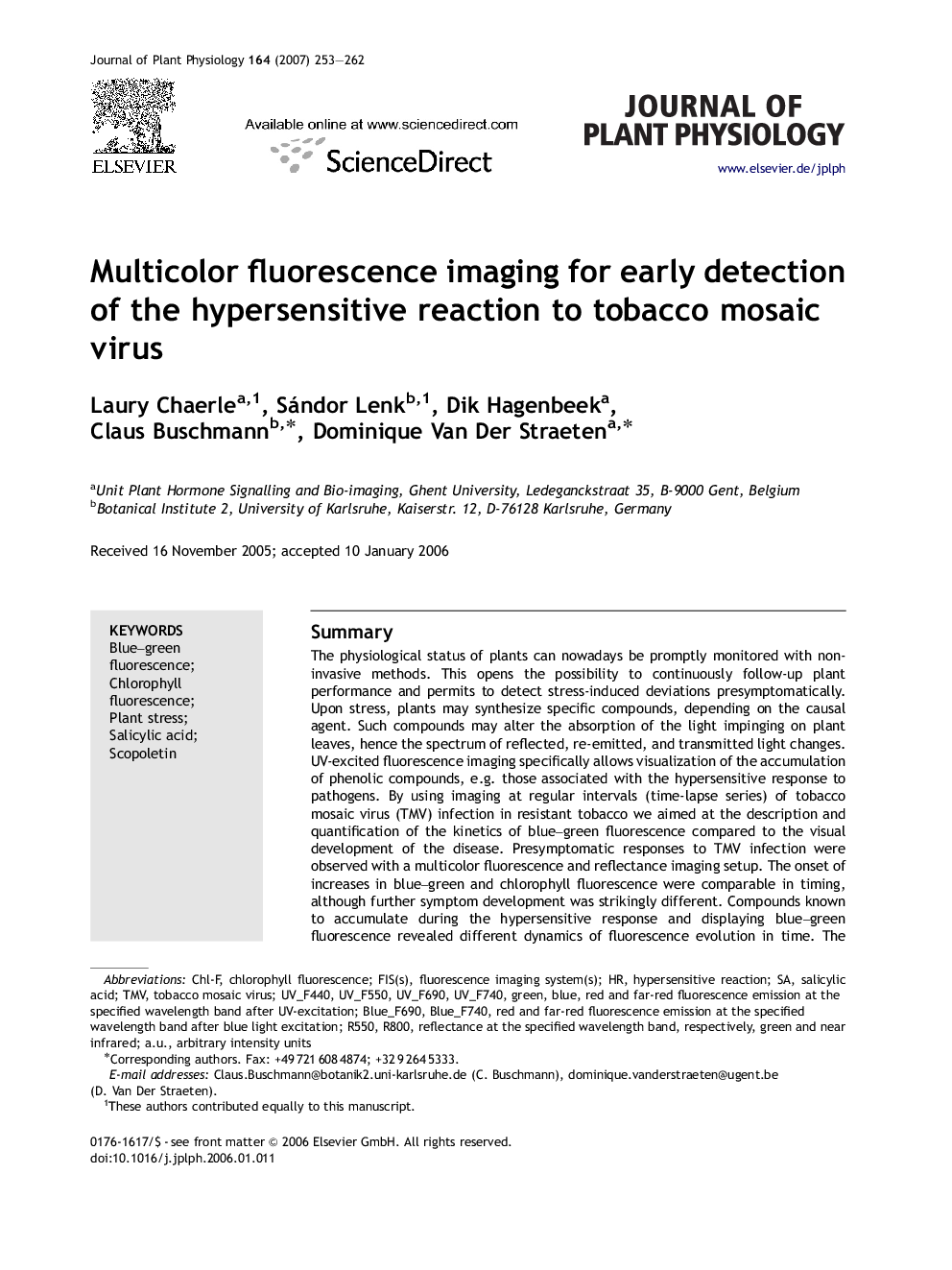| Article ID | Journal | Published Year | Pages | File Type |
|---|---|---|---|---|
| 2057204 | Journal of Plant Physiology | 2007 | 10 Pages |
SummaryThe physiological status of plants can nowadays be promptly monitored with non-invasive methods. This opens the possibility to continuously follow-up plant performance and permits to detect stress-induced deviations presymptomatically. Upon stress, plants may synthesize specific compounds, depending on the causal agent. Such compounds may alter the absorption of the light impinging on plant leaves, hence the spectrum of reflected, re-emitted, and transmitted light changes. UV-excited fluorescence imaging specifically allows visualization of the accumulation of phenolic compounds, e.g. those associated with the hypersensitive response to pathogens. By using imaging at regular intervals (time-lapse series) of tobacco mosaic virus (TMV) infection in resistant tobacco we aimed at the description and quantification of the kinetics of blue–green fluorescence compared to the visual development of the disease. Presymptomatic responses to TMV infection were observed with a multicolor fluorescence and reflectance imaging setup. The onset of increases in blue–green and chlorophyll fluorescence were comparable in timing, although further symptom development was strikingly different. Compounds known to accumulate during the hypersensitive response and displaying blue–green fluorescence revealed different dynamics of fluorescence evolution in time. The multichannel imaging system permitted to discern the key components salicylic acid and scopoletin. In contrast, for the compatible interaction between TMV and non-resistant tobacco, no presymptomatic responses were detected on inoculated leaves.This work proves the potential of multispectral imaging to unveil stress-associated signatures, and the power of blue–green fluorescence imaging to monitor accumulation of secondary compounds.
